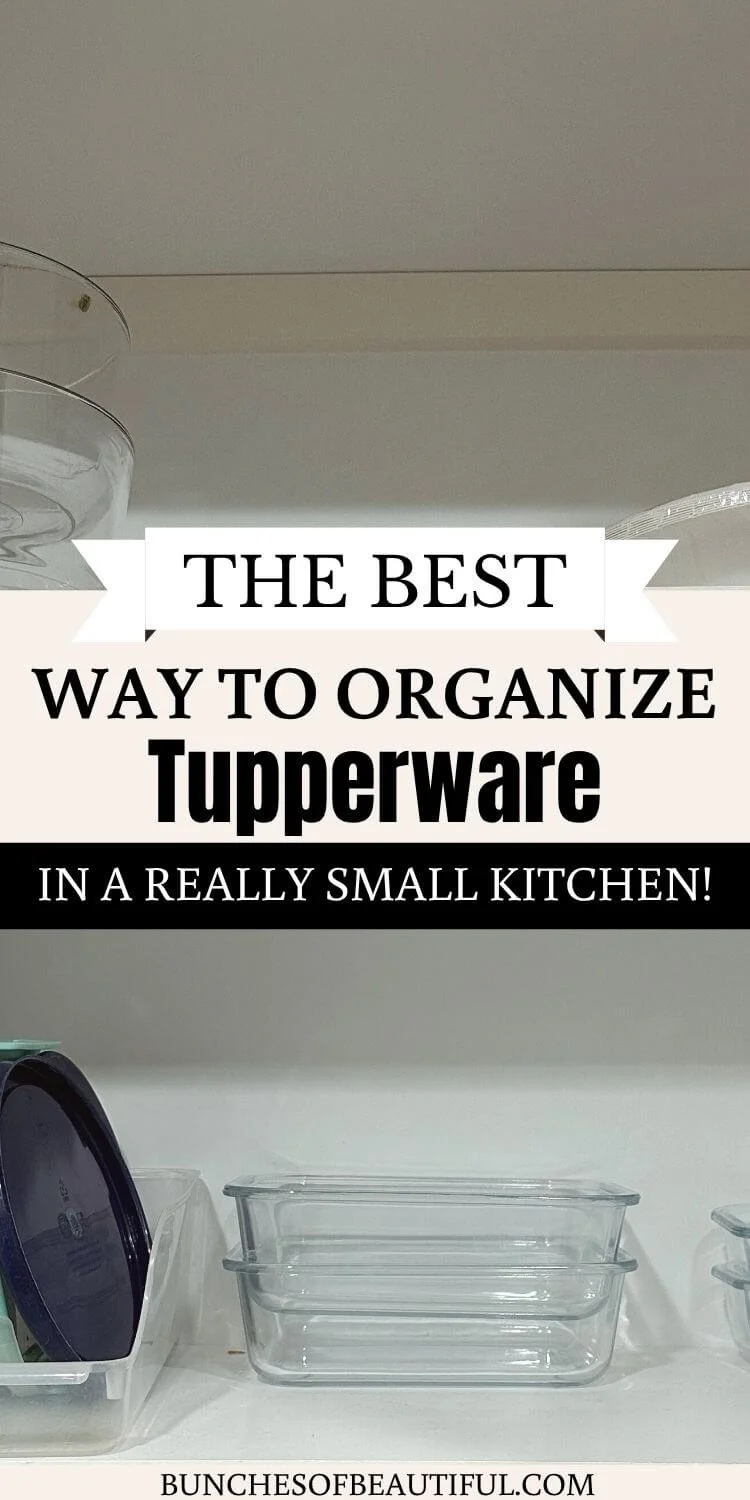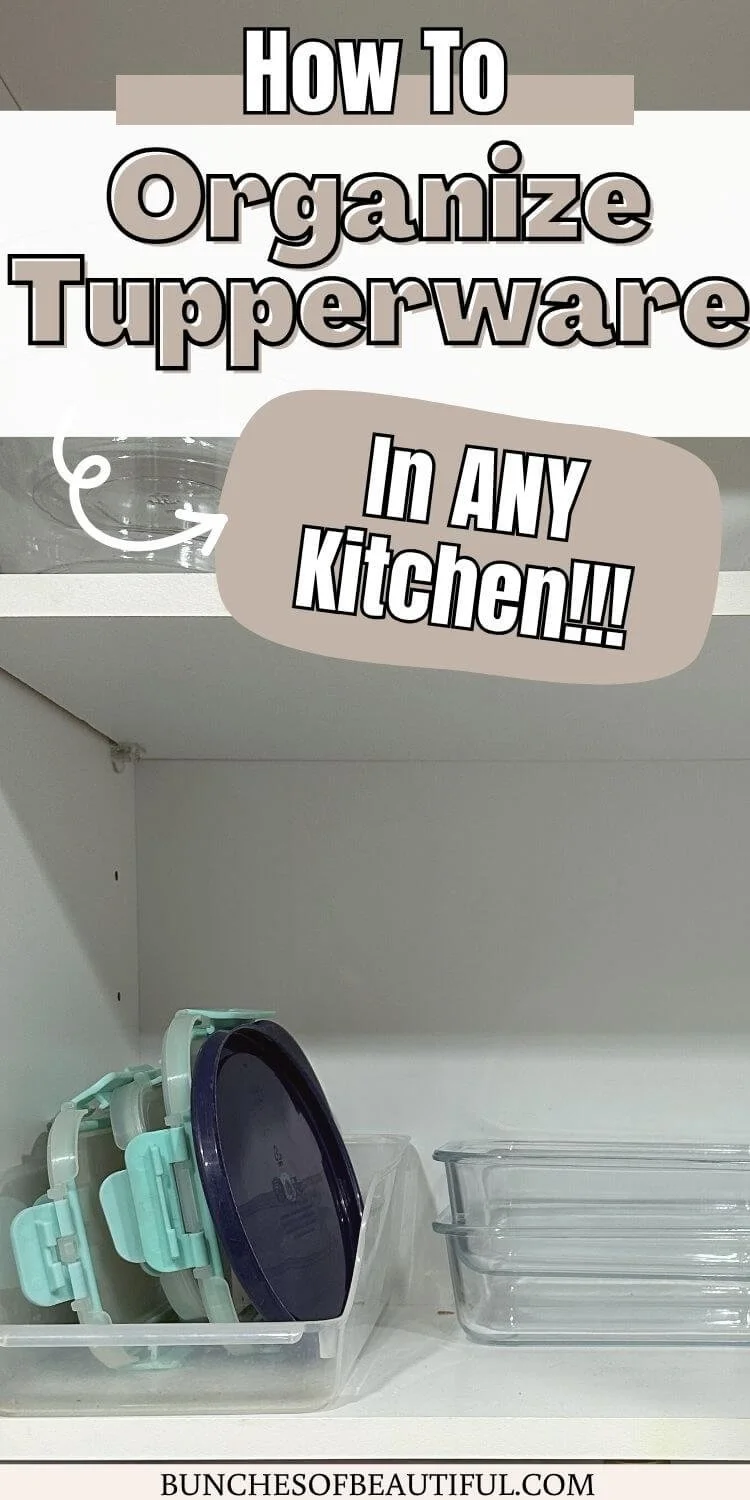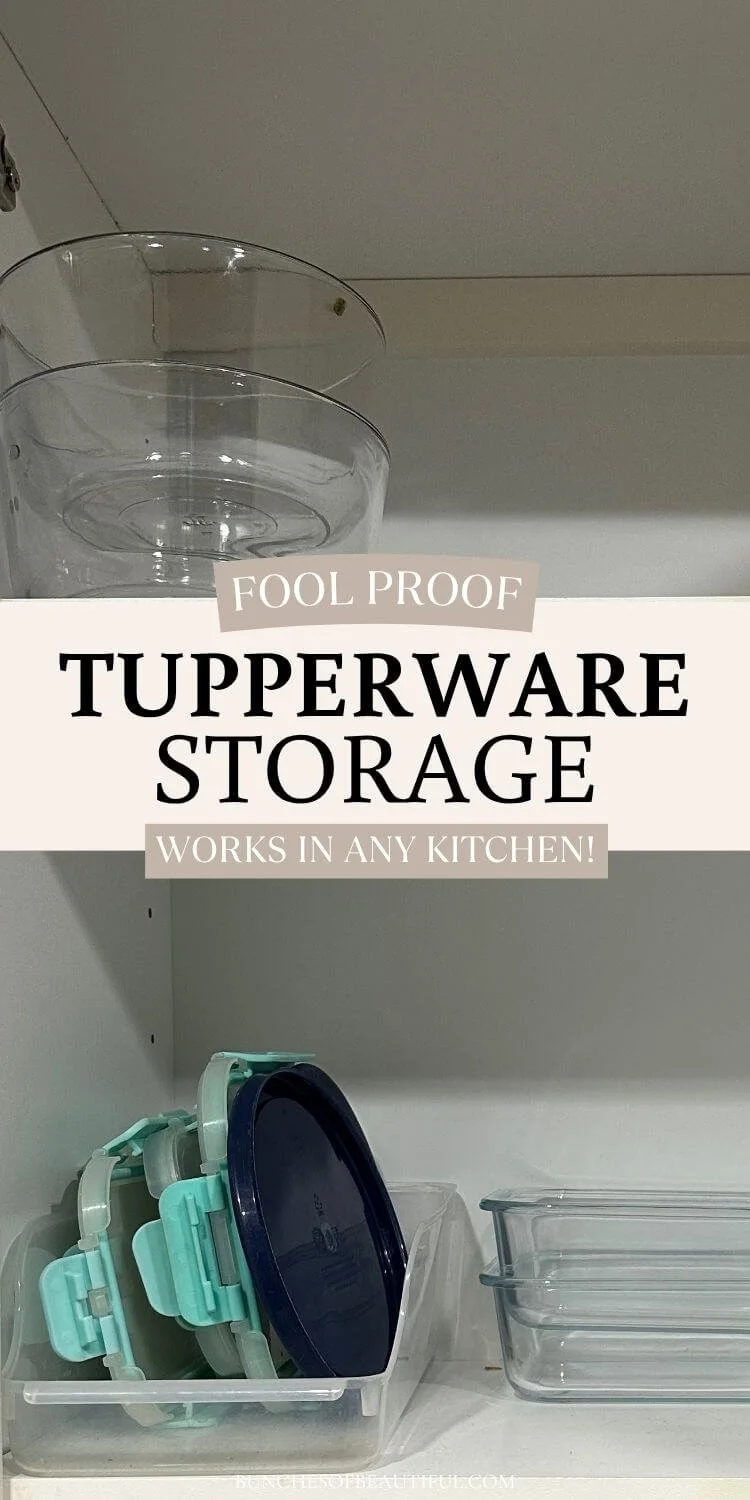The Real Reason Tupperware Gets Messy and How to Fix It
This post may contain affiliate links, which means I’ll receive a commission if you purchase through my links, at no extra cost to you. Please read our full disclosure here.
Tupperware organizing is one of those domestic mysteries no one warns you about.
You open the cabinet with hope, and something always lunges forward to greet you. A lid. A container. A stack that was perfectly fine yesterday and is suddenly auditioning for a trust fall.
If this tiny corner of your kitchen never seems to stay calm, take a breath. You are not doing anything wrong. Almost everyone has a chaotic Tupperware cabinet, even people who label their spices and alphabetize their pantry.
There is a reason this space unravels so quickly, and it has nothing to do with your effort or your available storage.
Once you understand the real reason behind the mess, the whole cabinet begins to make sense. And more importantly, it becomes surprisingly easy to fix.
The Real Reason Tupperware Gets Messy
Most people try to fix their Tupperware chaos by adding more: more bins, more baskets, more little containers inside the containers. Maybe you have even done a big cleanout that felt promising for a day or two, only to watch the cabinet quietly collapse again over the weekend.
But the root of the problem is not your organizing method.
It is the collection itself.
Tupperware gets messy because most of us own too many shapes and too many sizes that do not work together. They do not nest. They do not stack. And they do not like sharing a small cabinet.
Even if you straighten everything, mismatched shapes begin shifting again the moment you grab a single piece. A cabinet cannot stay stable when every item behaves differently.
There is also the visual clutter. Opening the cabinet gives your eyes a jumble of colors and shapes with no natural pattern. Your brain has to work harder than it should to make sense of it. That is why even a “tidy” Tupperware cabinet can feel stressful.
This is not a personal failing.
This is simply what happens when variety outnumbers structure.
The good news is that the fix is much easier than you think.
A quick note on decluttering: If you pick up a container and your first thought is, “What even is this for?” that is your sign. And if you are holding a lid that belongs to no known species, you can let it go. Tupperware has a way of multiplying like socks in a dryer. Releasing a few pieces is not failure. It is maintenance.
The Simple Rule That Makes Tupperware Organizing Easy
Here is the gentle rule that brings instant relief and long-term calm:
Choose two or three sizes from one brand and get multiples of only those sizes.
That is it.
Not twelve sizes.
Not a mixed set on sale that gives you everything from tiny sauce cups to casserole dishes.
Just two or three shapes you actually use, repeated enough times that they work as a family.
Consistent sizes know how to behave.
They stack without drama.
They nest without shifting.
Their lids finally match something, which feels like its own small miracle.
And because everything belongs to the same “family” of pieces, your cabinet no longer has to negotiate competing shapes. It settles. It stays balanced. And it does not unravel every time you reach for a container.
This is the kind of organizing solution that feels almost too simple, but you can feel its impact every time you open the cabinet. It turns a space that used to stress you out into something that supports your day.
Note: These are the exact Tupperware sets I use at home, except my round ones have a navy lid. I love the rectangular sets, but they do have a small gasket in the lid that needs to be removed and cleaned from time to time. We have had ours for more than seven years, and when I replace them someday, I may choose a style without a gasket for easier upkeep.
My lid container is actually a soda can holder from Dollar Tree. The one linked here is a similar size and works the same way. We use two sets of the rectangular containers and they stack beautifully.
How to Put This System Into Place
Once you simplify your collection, the next step is giving your containers a home that matches the way you naturally move in your kitchen. Organizing works best when it supports your rhythms instead of pushing against them.
Pick a spot that fits your habits.
If you reach for containers throughout the day, an upper cabinet near the fridge will feel natural. If you mostly use them for meal prep, a drawer closer to your cutting board might make more sense. There is no perfect place. Only the place that makes your daily flow easier.
Group your containers in a way that feels natural for your space.
Smaller pieces often stack well with their lids on, especially if you have room to keep them together as a set. Larger containers tend to nest better without their lids, which keeps the stack steady and saves space. You can mix and match these approaches depending on the shapes you use most and the cabinet you are working with.
Then, give every lid an upright home.
Stand your lids on their side in a narrow bin so they stay visible and contained. They stop sliding. They stop falling over. And suddenly you can grab exactly what you need without a little scavenger hunt.
A soda can organizer works beautifully for this because the width is just right for keeping lids standing tall. If your shelves are deep, choose a bin with higher sides. If your cabinet is shallow, go with a shorter open-top style so everything stays accessible.
Let the system carry the weight for you.
When your containers nest well and your lids stand upright, the cabinet resets itself every time you put dishes away. You do not have to fuss or reorganize. You simply place things back where they fit, and the space stays steady on its own.
This is the kind of ease that makes a quiet difference. You open the cabinet and feel a little more grounded, a little more supported, every single time.
Quick Start Checklist
A simple guide you can follow today.
• Keep only containers that nest
• Choose two or three sizes that match your everyday cooking
• Buy multiples of those sizes
• Store lids upright in a narrow bin
• Choose a cabinet that fits your natural kitchen flow
• Let the system settle into your routine
These steps create a cabinet that feels stable and predictable instead of chaotic.
Tupperware organizing does not need to feel overwhelming. Once the shapes match, everything changes. You can find what you need. You can put things away without frustration.
And you get back a small corner of your kitchen that finally feels easy.
That is the quiet beauty of a system built for real life! It supports you without asking much in return! Happy organizing! Hugs!
For more home organization ideas follow me on Pinterest!
Updated on: 11/19/2025









